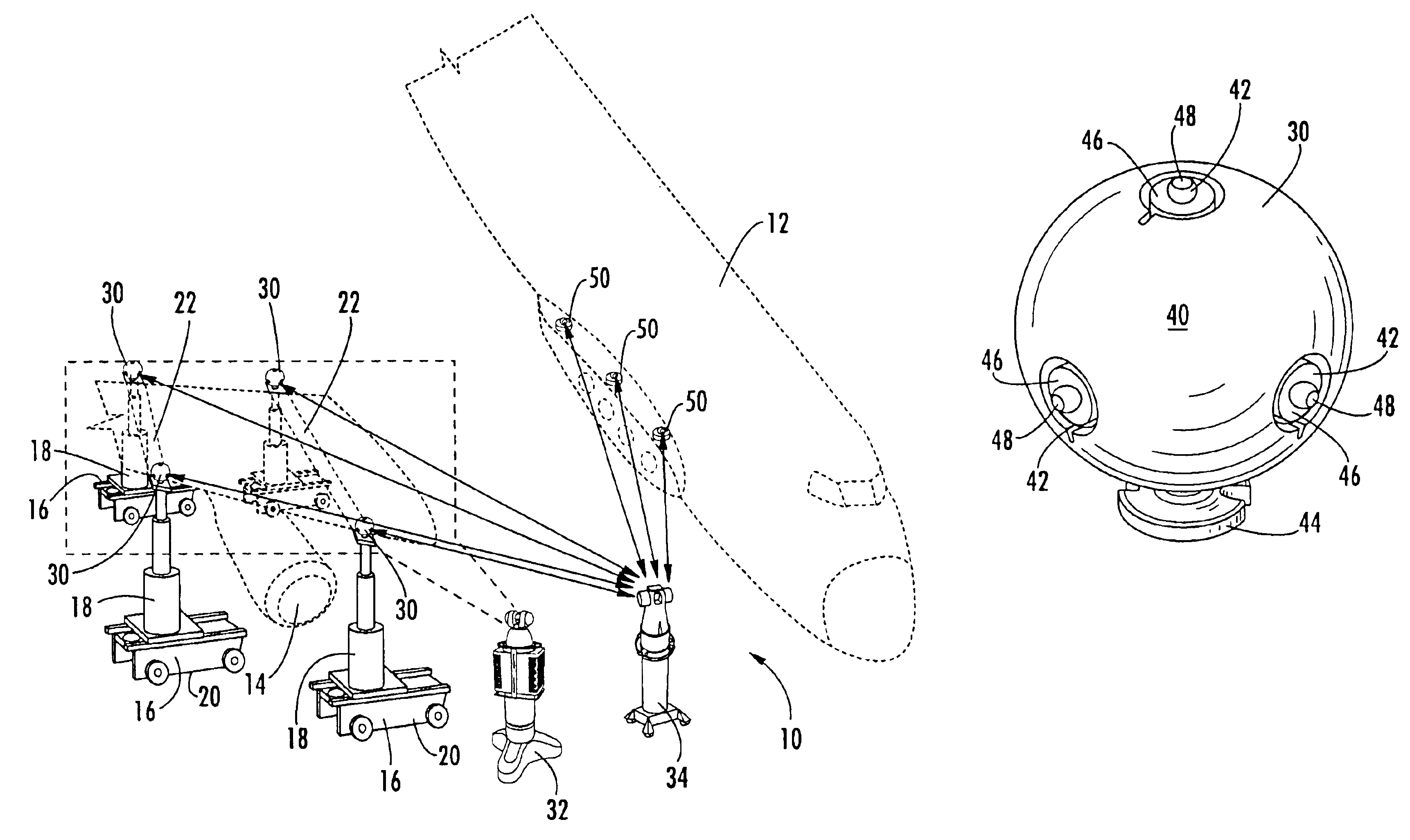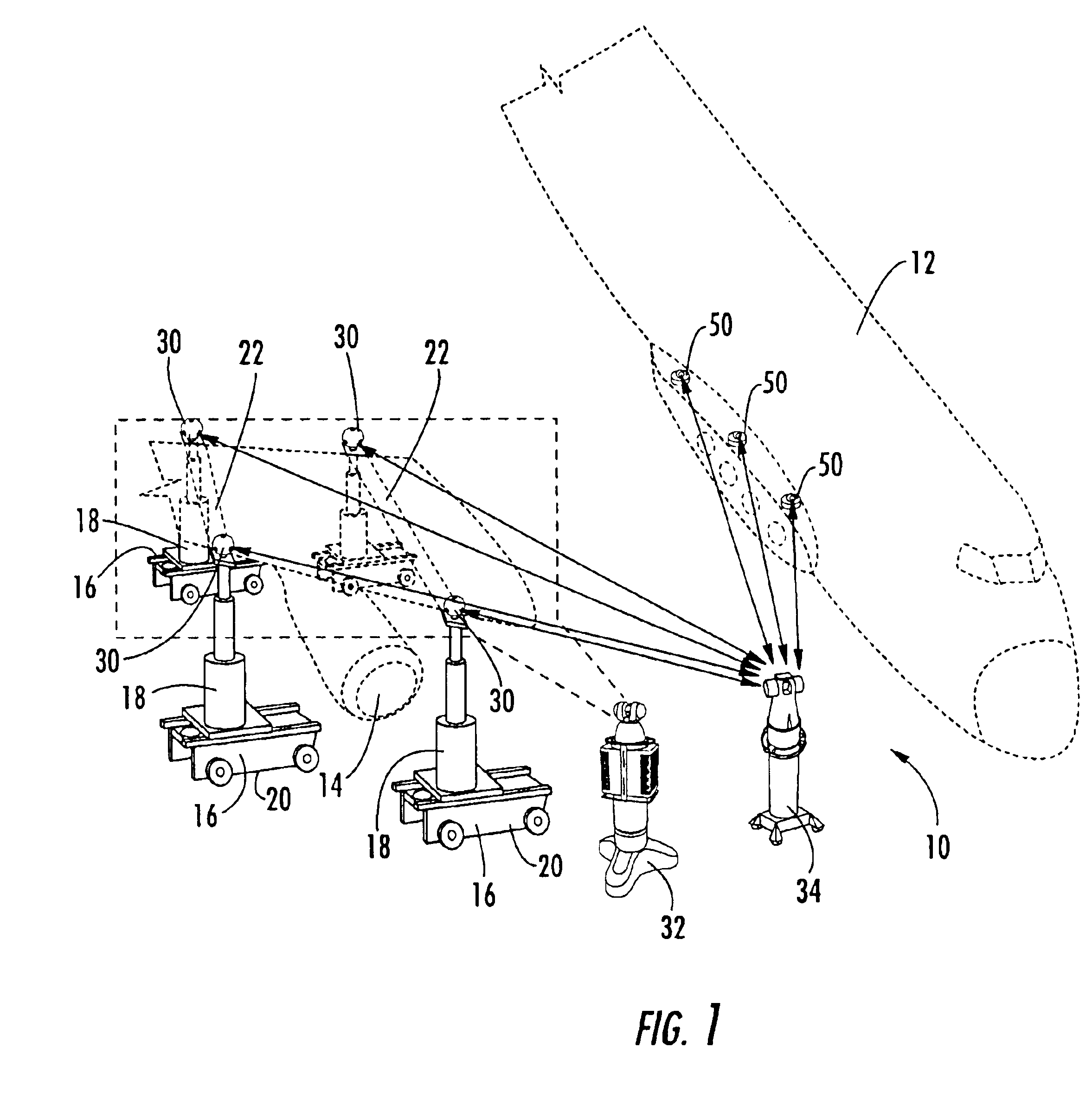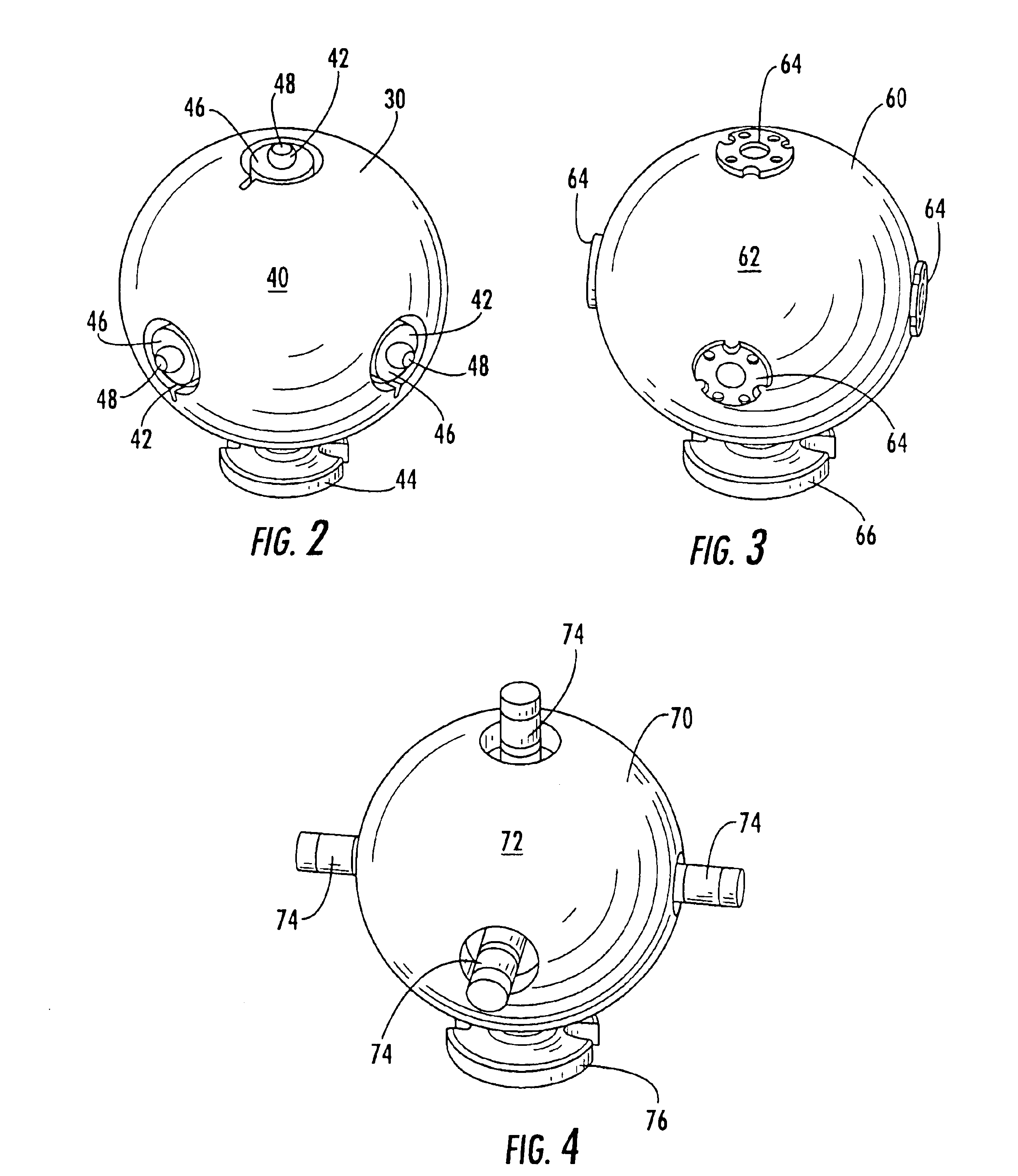Tie-in device for the correlation of coordinate systems
a coordinate system and tie-in technology, applied in the field of positioning systems, can solve the problems of limited movement capability, fixture flexibility, and high and achieve the effect of reducing the cost of changes to components or assembly procedures
- Summary
- Abstract
- Description
- Claims
- Application Information
AI Technical Summary
Benefits of technology
Problems solved by technology
Method used
Image
Examples
second embodiment
[0040]FIG. 3 illustrates a tie-in device 60 of the present invention, wherein the tie-in device comprises a generally spherical outer surface 62 and at least one target 64 further comprising an infrared flat detector for use with an infrared measurement device as described above. A non-limiting example of an infrared flat detector is the Constellation 3Di™ PATCH DETECTOR, which is also available from Arc Second of Dulles, Va. The tie-in device 60 also comprises a base 66 on the bottom of the generally spherical outer surface 62 to mount the tie-in device to a sufficient surface such that the tie-in device is in a fixed location relative to a component during assembly, as described above.
[0041]The tie-in device 60 of FIG. 3 is advantageously used with a first locating device 32 comprising a laser radar measurement device to map the outer surface 62 of the tie-in device to locate the reference point of the tie-in device in the first coordinate system as described above and with a seco...
third embodiment
[0042]FIG. 4 illustrates a tie-in device 70 of the present invention, wherein the tie-in device comprises a generally spherical outer surface 72 and at least one target 74 further comprising an infrared cylindrical detector for use with an infrared measurement device as described above. A non-limiting example of an infrared cylindrical detector is the Constellation 3Diυ One Detector Tool, 32 Facet Cylindrical Detector End 1, which is also available from Arc Second of Dulles, Va. The tie-in device 70 also comprises a base 76 on the bottom of the generally spherical outer surface 72 to mount the tie-in device, as described above.
[0043]The tie-in device 70 of FIG. 4 is advantageously used with a first locating device 32 comprising a laser radar measurement device to map the outer surface 72 of the tie-in device to locate the reference point of the tie-in device in the first coordinate system as described above and with a second locating device comprising an infrared measurement device ...
fourth embodiment
[0044]FIG. 5 illustrates a tie-in device 80 of the present invention, wherein the tie-in device comprises a generally spherical outer surface 82 and at least one target 84 further comprising an infrared vector bar detector for use with an infrared measurement device as described above. A non-limiting example of an infrared vector bar detector is the Constellation 3Di™ Two Detector Tool, 32 Facet Cylindrical Detector End 2, which is also available from Arc Second of Dulles, Va. The tie-in device 80 also comprises a base 86 on the bottom of the generally spherical outer surface 82 to mount the tie-in device, as described above.
[0045]The tie-in device 80 of FIG. 5 is advantageously used with a first locating device 32 comprising a laser radar measurement device to map the outer surface 82 of the tie-in device to locate the reference point of the tie-in device in the first coordinate system as described above and with a second locating device comprising an infrared measurement device wi...
PUM
 Login to View More
Login to View More Abstract
Description
Claims
Application Information
 Login to View More
Login to View More - R&D
- Intellectual Property
- Life Sciences
- Materials
- Tech Scout
- Unparalleled Data Quality
- Higher Quality Content
- 60% Fewer Hallucinations
Browse by: Latest US Patents, China's latest patents, Technical Efficacy Thesaurus, Application Domain, Technology Topic, Popular Technical Reports.
© 2025 PatSnap. All rights reserved.Legal|Privacy policy|Modern Slavery Act Transparency Statement|Sitemap|About US| Contact US: help@patsnap.com



